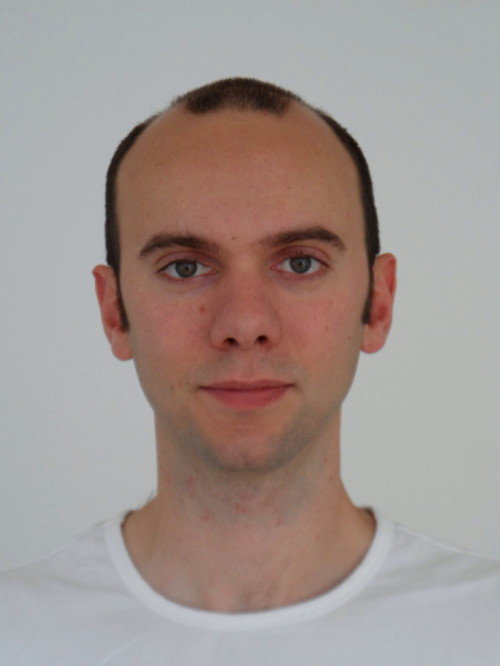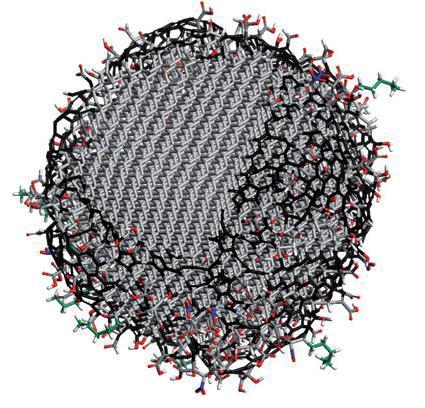Humboldt Fellow new addition to Aziz team

Dr. Tristan Petit joins the Aziz-Team. Foto: T.Petit

Simulated view of a nanodiamond. © T. Petit
Starting June 1st, Dr. Tristan Petit will be joining Prof. Dr. Emad Flear Aziz’ team for a two-year postdoc. His Humboldt Foundation Fellowship for Postdoctoral Researchers gave Petit the option to choose his German scientific host. Ultimately, he decided on the Joint Ultrafast Dynamics Lab in Solutions and at Interfaces (JULiq) that was set up by Aziz. Says Petit: “I really wanted to be on Aziz’ team as they have a lot of collective expertise with spectroscopy in water.”
26-year-old Tristan Petit earned his Ph.D. degree at the Ecole Normale Supérieure de Cachan, France, back in March of this year. His doctoral work at the Diamond Sensors Laboratory (CEA), Gif-sur-Yvette, focused on nanodiamond surface modifications to evaluate their biomedical potential. Nanodiamonds could make good “drug cabs” as they have low toxicity and their surfaces can be easily functionalized for the transport of other molecules.
Although to date, the interactions between water molecules and nanoparticles remain unclear. Petit has made it his mission to get to the bottom of these interactions: He is planning on using soft X-ray spectroscopy to study water-based dispersions of nanodiamonds “in situ” on a microjet. This may provide important clues about how these special nanoparticles behave under physiological conditions, in other words, in the body. “Thanks to the unique Lixedrom experimental setup, we’re able to conduct experiments that can’t be done anywhere else really. Ultimately, that was a strong motivating factor for me to come to Berlin,” admits Petit.
arö
-
Freeze casting - a guide to creating hierarchically structured materials
Freeze casting is an elegant, cost-effective manufacturing technique to produce highly porous materials with custom-designed hierarchical architectures, well-defined pore orientation, and multifunctional surface structures. Freeze-cast materials are suitable for many applications, from biomedicine to environmental engineering and energy technologies. An article in "Nature Reviews Methods Primer" now provides a guide to freeze-casting methods that includes an overview on current and future applications and highlights characterization techniques with a focus on X-ray tomoscopy.
-
IRIS beamline at BESSY II extended with nanomicroscopy
The IRIS infrared beamline at the BESSY II storage ring now offers a fourth option for characterising materials, cells and even molecules on different length scales. The team has extended the IRIS beamline with an end station for nanospectroscopy and nanoimaging that enables spatial resolutions down to below 30 nanometres. The instrument is also available to external user groups.
-
A simpler way to inorganic perovskite solar cells
Inorganic perovskite solar cells made of CsPbI3 are stable over the long term and achieve good efficiencies. A team led by Prof. Antonio Abate has now analysed surfaces and interfaces of CsPbI3 films, produced under different conditions, at BESSY II. The results show that annealing in ambient air does not have an adverse effect on the optoelectronic properties of the semiconductor film, but actually results in fewer defects. This could further simplify the mass production of inorganic perovskite solar cells.
